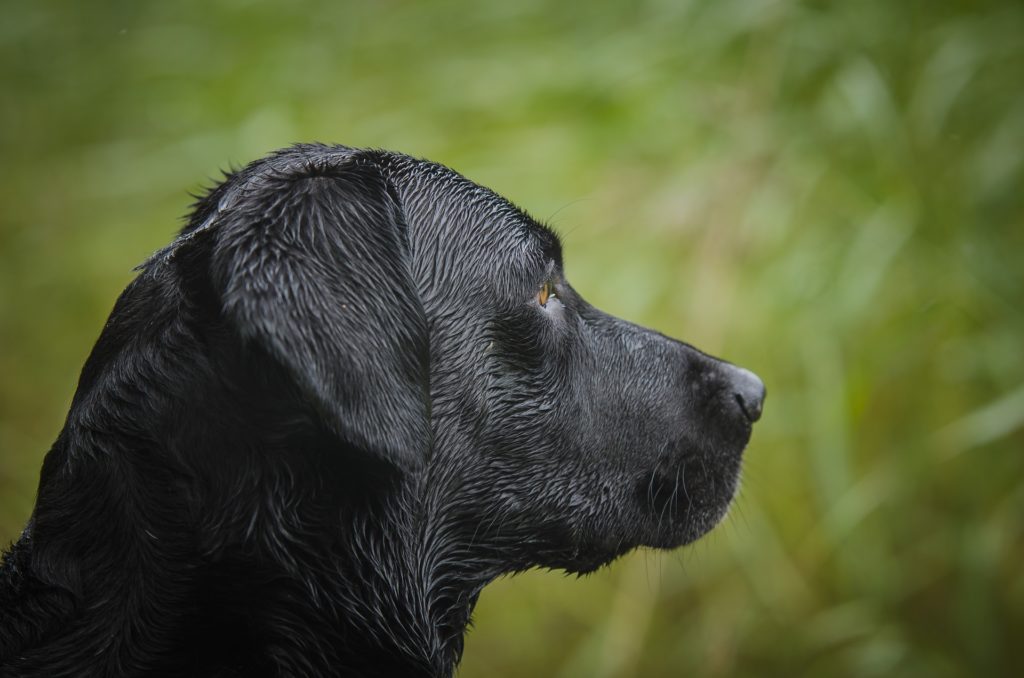It’s no surprise that all dogs need training. Your pup is no exception. Perhaps you’re a first-time owner and don’t know where to begin, or you’re doing some research before you decide whether or not obedience classes are worth the punch to your wallet.
This article will give some basic tips on how to train a Labrador Retriever, but it’s important that you know the training professionals on the market are there for a reason. The Labrador known today comes from a working-class lineage which means they thrive when there’s a job to do. They’re eager-to-please, intelligent, and docile, making them the perfect for efficient training.
However, you might come to learn that training a Lab on your own is no easy task, regardless of how well they respond to training. When doing your due diligence, everywhere you turn people will advise that they spend at least a certain period of their puppyhood in obedience classes.
While it’s not an imperative for a properly raised Labrador, when taking into consideration their aptitude for learning and personality-type, this dog breed benefits greatly from the professional service. Read below for some dog training tips:
Where To Begin?
The training process begins with you as the owner. Not all dogs are the same and some will progress at different rates.
You should know that you’re going to face obstacles along the way—in the same vein as raising a child—and that you’re going to grow frustrated.
Patience should be your ally, mantra, and perpetual practice. It may take time, but your pup will learn to become a mannered and behaved adult. This, of course, will occur as long as you’re diligent.
So you’ve bought your puppy—hopefully from a reputable breeder—and they’re just now acclimating with the household. Quite obviously, the most important lesson to is to potty train your dog.
Structure is Key
When your puppy is in his infantile ages, despite his seemingly oblivious and distracted manner, he is ripe for learning. At this age dogs process new information at a rapid rate, trying to create their own order out of entropy. You don’t want your pup to teach himself the ‘wrong’ lessons, so you have to steer him the right direction.
You do this first with gentle discipline and imposing a routine. While some professionals debate this statement, it’s common practice to begin imposing structure from the first day your dog enters your home. Begin first by designating a set eating and potty area, one in which will remain consistent from the start to finish of your pups training.
Potty Training
At such a young age, the only type of ‘discipline’ you should impose is a positive reward system. When you see your pup trying to use the restroom, gently pick him up and run him to the area which you’ve designated as his bathroom.
Upon your dog finishing, praise him with kind words, the soft and encouraging use of his name, treats, toys, playtime, and anything that falls beneath the ‘reward-system.’ Over time, that structure will imprint on your pup and he’ll first go potty in his designated area to please you, and then it will solidify as the only place to do so.
Meal Time
A routine needs to be created for this, too. You’ll come to realize that the routine for both your pups meal time and potty time are often mutually exclusive. A pup will be more prone to use the restroom after a meal and some water than most times of the day (save for in the morning or directly before bed).
Create a set time for your pup to eat and set place to do so. Do not leave the food out for him to eat when he pleases, as this can create bad habits and a glutinous adult. Eventually your Lab will grow hungry when the time you’ve set calls for him (your pup’s body will adjust to the schedule) and he will know where to go for his meal.

Teach Your Pup To Respond
Once you’ve chosen your dog’s name, stick to it. In his early puppyhood you should use no other name when calling your dog.
No nicknames, no cute little variations of his given name, nothing. Consistency in this timeframe is what’s going to reinforce the name you’ve given your pup.
Only ever use your dog’s name when you’re either praising him because he’s acted correctly, or because you want his attention. Never use it for anything other than those two purposes.
Often new owners will be cutesy in the way they converse with their pup, or reinforce his name when they’re scolding him for poor behavior, but this will confuse your Labrador as to exactly what his name means and how he is supposed to respond to it. You want your pup to think ‘now it’s time to listen, or yes I’ve done something right!’ when you use his name.
Crate Training
Crate training your puppy is the process of ‘isolating’ your canine to an area he perceives to be designated specifically for himself. The benefits of successful crate training vary from a canine that is better behaved and housebroken (another way of saying potty-trained), to ease of travel if you ever need to cover long distances with your companion.
The crate becomes a management utility for your Labrador and a place in which he feels safe fleeing to. It’s his security blanket and home within the home. Your pup will take his toys and keep them in there, and since he feels ownership over the area, he will learn to hold his bladder and not potty in his space.
Please note: for some dogs, no matter how efficiently they’re crate trained, it’s not successful. That’s not to say that it does any damage, but just to say if you go ahead and decide you want to crate train your dog that you shouldn’t feel defeated if you don’t experience results.
Socialization
Socializing your dog is the process of acclimating your Labrador to different environments, people, and canines.
It should begin at the same time that you’re enforcing structure. In fact, when your pup can survive without his mother is the time when it’s appropriate to begin socialization.
If you’re worried about this process, don’t worry, there is no better breed to socialize than the Labrador Retriever.
These vivacious and enthusiastic animals are as big of people pleasers as they are socialites. They thrive off giving and receiving attention and have never once heard the word insecurity.
By socializing your Labrador early on you create the confidence he’ll use to behave himself as an adult. The more familiar and exposed to the world, the higher propensity your pup will have for shedding nerves in chaotic or heavily-social situations.
Excitability
Labradors can have issues with excitability. They’re so wildly enthusiastic that in social situations they want to meet everyone and all-at-once. This behavior can lead to boisterousness, aggressive playing, and evoking aggression from stranger canines. In the early days of socialization, it’s a fantastic place to begin rewarding your Lab when they control his excitement.
Obedience Training
Obedience training is the process of teaching your dog commands, therefore allowing you to discern right from wrong. It’s a discipline focused on streamlining your dog’s responsiveness and enforcing your role as the parent and alpha.
Common obedience commands are as follows:
- Sit: This command tells your dog to sit where he is placed and to only move again once you’ve allowed him to. Teaching your dog to sit is very important in the early training process.
- Shake: This is more of a trick than a basic obedience command but it’s often one of the first commands taught as it’s easy to learn, stimulates his intellect, and is fun for both the owner and the canine.
- Lay down: This command tells your dog to lie where he is placed. Your pup should not rise unless you’ve given the command to release him. Training your dog to lay down should be taught at the same time as teaching him to sit.
- Come: Arguably the most vital of all basic obedience disciplines, this commands your dog to your location. If you move, he should know that ‘come’ also means to follow. This will greatly reduce the risk of your dog running off or wandering into a dangerous situation.
- Drop it: Another vastly important command, this obedience discipline will allow you to control the situation if your dog eats something it shouldn’t (something we all know they love to do).
As you can see from the above, obedience training is quite important for both the safety of your dog and your experience with him. Once the groundwork of obedience training has been laid, you can migrate to other more ‘entertaining’ forms of training like games and tricks.
Obedience training can be difficult, however, as it ta
kes quite a bit time to reinforce exactly what you want your pup to learn and even longer to maintain the skill developed. As
a general rule of thumb, there are three parts to teaching your Lab an obedience discipline:
- Introduction: This is where you first introduce your dog to the skill. It’s your attempt at ‘showing him what to do.’ If he responds correctly, you praise and reward him.
- Vetting the skill: This is where you put that skill to work! Test it outside of his comfort zone or wherever you originally trained him. Your pup needs to know that this skill should be performed in any and all environments.
- Longevity: This is where you reinforce the skill he has learned. Over time, your dog will forget it if you don’t exercise the skill and memory.

Obedience Classes
It’s paramount that your Labrador is disciplined in obedience training. Not only does it help you communicate with your canine and further experiences your experience alongside him, but it’s also a safety program.
If your dog can heed your commands and follow your orders, then he will do so when you’re keeping him from danger.
That’s why it’s particularly important to take this portion of your dog’s training seriously. Not only that, but Labs naturally crave stimulation and will satisfy that thirst during class.
Professionals will create a foundation in their obedience classes and then allow you to further your pups progress at home. This means that once your dog has been properly trained, you can then move forward with teaching him tricks and games. While it’s not a necessity, it’s recommended your dog spends part of his puppyhood in the care of professional trainers.
One of the requirements of owning a Labrador Retriever is training. Luckily for you, the process of training this breed is pleasant, easy, and effective. These eager to please canines are also stimulation-hungry, meaning they love to engage their intellects. Not only will they adore learning from you, but they’ll process the knowledge quickly and retain the lessons dexterously.
There’s a reason that the Labrador is the #1 most popular dog breed in America, and one of those is their trainability. Through and through, these are brilliant animals. If you stay diligent, patient, and consistent, there’s no reason you should have anything but a properly trained and behaved Labrador Retriever.






